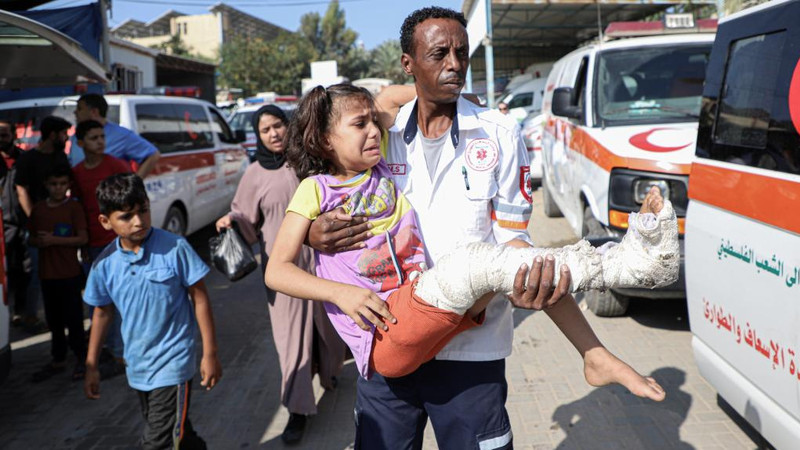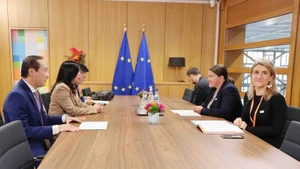Along with UNICEF’s data on over 333 million children living in extreme poverty worldwide and the fact that 69 million children are living in poverty in the 40 richest countries in the world, this situation shows that the UN’s goal of completely eliminating extreme poverty in children and letting children live in peace is a great challenge and requires the responsibility of each country.
Russell was haunted by what she witnessed during her visit to Gaza. According to her, 1,200 children are believed to still lie under the rubble of bombed buildings or have not been identified. She said that in addition to bombs, rockets and gunfire, children in Gaza also have to live in horrible conditions. One million children — all the children in the territory — are currently facing food shortages and a catastrophic nutrition crisis.
UNICEF estimates that acute malnutrition among children in Gaza could rise by nearly 30% in the coming months. The number of children killed accounts for 40% of the total number of deaths in the current Gaza conflict.
The plight that children in Gaza or in any conflict-afflicted place in the world are experiencing is sounding the alarm about the task of protecting the rights of young citizens, especially the right to life.
The UN Convention on the Rights of the Child, adopted on November 20, 1989, is the most widely recognised human rights convention in history, covering three main pillars: non-discrimination, the best interest of children, and the right to life survival and development. More than 195 countries have ratified the convention.
However, the world is facing many problems such as inequality for children, who are the most vulnerable to violence, conflict and climate change. Millions of children are still deprived of the most basic rights, without proper medical care, nutrition, education, nor protection from violence.
Complicated crises caused by the impact of the COVID-19 pandemic, conflicts, climate change and economic shocks have slowed the world’s progress in eliminating poverty, leaving millions of children living in extreme poverty. About 17% of the world’s children still live on 2.15 USD/day.
According to the UK-based charity Save the Children, extreme weather events in countries vulnerable to climate change will throw more than 27 million children into hunger in 2022, up 135% compared to 2021. UNICEF estimates that about one billion children in the world are at extremely high risk of being affected by climate change, which increases risks to children such as scarcity of clean water, diseases, air pollution and extreme weather patterns.
Children living in extreme poverty are deprived not only of basic needs but also of dignity, opportunity and hope. Poverty is the main cause of violence against children, including situations such as child labour, child trafficking, sexual abuse and child recruitment for criminal rings and participation in conflicts and extreme violence.
According to a 2023 UN report on violence against children, children are increasingly at risk of being affected by violence due to multiple overlapping crises. The number of children subject to labour abuse has increased to 160 million; 35% of human trafficking victims were found to be children. The impact of violence is becoming more serious, direct and lasting, hindering their brain development, physical and mental health, and learning ability.
Hundreds of risks are threatening the lives of children, while response measures do not meet practical needs, obstructing efforts to implement the UN’s goals on children protection. UNICEF has chosen the theme “For every child, every right” for World Children's Day 2023 as a reminder that it is necessary to increase responsibility towards children so that future generations can live in a world of peace and sustainable development.
















